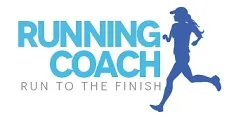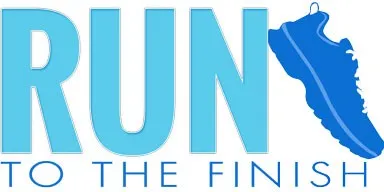Have you ever been out for a run and developed a burning sensation in your belly or chest? Some of you are probably thinking, “What on earth is she talking about? Running makes my quads burn, not my belly.” But, acid reflux and running is not uncommon, so we’re going to dive in to what you need to know today.

Those of you who have experienced this strange pain, know my question isn’t coming out of left field. While you may not be sure what you’ve experienced, you do know it wasn’t normal or comfortable.
What you may have experienced is acid reflux, aka heartburn or GERD (gastroesophageal reflux disease). While many people experience heartburn simply from certain foods, others experience exercise-induced GERD. Neither is fun.
It’s important to know this happens in totally healthy people, so it’s not something to cause immediate concern, but to figure out and resolve.
So what is acid reflux? Why can running or exercise make it worse? How can we prevent it from happening? Keep reading for the answers to these questions and more.
What is Acid Reflux or GERD?
If you’ve ever experienced a burning sensation in your chest, you may have experienced heartburn. This sensation often occurs after eating and may be worse if you lay down.
Other heartburn symptoms include belching, nausea, bitter taste, discomfort in the upper abdomen, sore throat, and even a dry cough.
This can be occasional or can be a chronic disease. It is caused by stomach acid flowing into the esophagus. This can happen if the lower esophageal sphincter (LES), a band of muscle at the connection of the esophagus and stomach, is weak or too relaxed. It then can then allow backflow. Normally, this is a one-way route.
Causes of Acid Reflux or GERD
There are a lot of potential causes of acid reflux or GERD. Being overweight or pregnant can be a trigger or at least increase your risk.
Other things are food related. Some common triggering foods include:
- Spicy foods
- Onions
- Citrus
- Tomatoes and tomato products
- High-fat foods or meals
- Caffeinated drinks (soda, coffee)
- Alcohol
- Chocolate
- Some medications
And no surprise those foods right before bouncing around…and added chance of issues.
What is Exercise-Induced Acid Reflux?
You may not have experienced acid reflux before but then suddenly have it when running or doing a high-intensity workout of some kind. This is known as exercise-induced acid reflux.
Basically you get similar symptoms as people who experience heartburn in general, but it’s during workouts. But why does it happen when exercising? It’s honestly not uncommon.
Exercise, be it running, other high intensity activity, or even core work can create greater abdominal pressure. As a result, that sphincter muscle mentioned earlier relaxes and can let stomach acid flow into the esophagus and voila: heartburn!
In reviewing studies on this, one that stood out looked at the effect of exercise on the severity of reflex. It was a small study with only 10 participants, but they did find that exercise, particularly running, induces acid reflux and it was due to the relaxation of the sphincter muscle that usually keeps stomach acid in the stomach.
Tips for Preventing Exercise-Induced Acid Reflux
You’ll be glad to know that you don’t have to quit your favorite exercise to stop your exercise-induced heartburn. Below are some suggestions to try if you’re dealing with acid reflux during or after exercise.
#1 Time Your Nutrition
To be clear, I am not suggesting anyone run in a fasted state. However, there’s no need to eat a large and filling meal right before a run.
Eating makes your stomach produce more acid to digest the food you’ve eaten, which can then end up creeping into your esophagus. So instead of a big meal, think small snacks that are easily digestible.
If you do eat a meal, consider waiting an hour or two before tackling your next workout.
#2 Consider Type of Exercise
Certain types of exercise may cause these symptoms for you, while others don’t. For example, laying down after eating is linked to heartburn. Consider avoiding core work or strength work that puts you in a horizontal position, especially after eating.
Also remember that high-intensity workouts can trigger greater abdominal pressure leading to acid moving into the esophagus. Again, try to avoid that immediately after a large meal.
#3 Find Trigger Foods
It may be that certain foods and drinks trigger GERD for you. This may take some experimentation and tracking, but try to see if there’s a link between what you’re eating, when, and when you experience heartburn during exercise.
Some people find that they can’t consume alcohol the day before a run or they try to avoid highly acidic foods like citrus and tomato-based foods.
#4 Hydrate
Water can help with digestion. Make sure you’re drinking water with your food and while exercising. This can help ensure your stomach is digesting food and moving it along.
Just remember to not overdo it!
#5 Wear Looser Clothing
Tight clothing can also be contributing to your GERD. While it may be hard to believe, a tight top or tight waistband can increase pressure on your abdomen. So if you’ve just eaten, consider wearing looser clothing to avoid adding to the pressure.
#6 Medication
There are plenty of OTC medications you can use for acid reflux. Prilosec and Tums are two examples. Tums, one of several antacids, provides more immediate relief, while Prilosec and its generic counterparts take a few days to kick in. Both are effective at what they do.
However, neither should be taken for long periods of time. If you are prone to kidney stones, avoid Tums, which it says on the bottle. Prilosec should be taken for 2 weeks unless otherwise directed by a doctor to take for a longer period of time.
If acid reflux is an ongoing issue for you, it doesn’t hurt to connect with your doctor, especially if the rest of these tips aren’t providing the relief you need to stay active. They may prescribe a proton pump inhibitor or H2 receptor blockers, which may be stronger than anything over the counter, and lessen the amount of stomach acid produced.
Treating Heartburn
If you experience heartburn only on a rare occasion, often a simple over-the-counter medicine will do the trick. If you’re experiencing it more often, like multiple times a week, and/or consistently during exercise you should connect with your doctor.
Intermittent heartburn can be treated easily with over the counter meds. But if it’s happening more often, a doctor may want to talk through lifestyle and diet changes, or a stronger medication.
Doctors may also be able to determine if something else is at play, for example a hiatal hernia, which is when a part of the stomach bulges through the diaphragm into the chest area. Some people don’t know they have these and others may only have them while exercising.
Stomach acid can damage your esophagus and even lead to other problems so it’s important to take care of it and prevent it.
Other ways to connect with Amanda
Instagram Daily Fun: RunToTheFinish
Facebook Community Chatter: RunToTheFinish
Sign Up to Receive a Weekly Newsletter with Top Running Tips and Laughs



 Racing And Running on Your Period: What You Need to Know
Racing And Running on Your Period: What You Need to Know